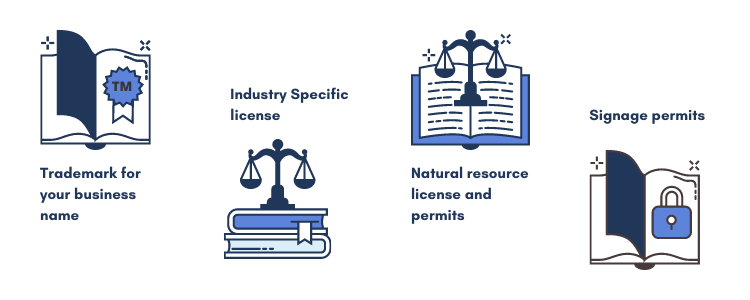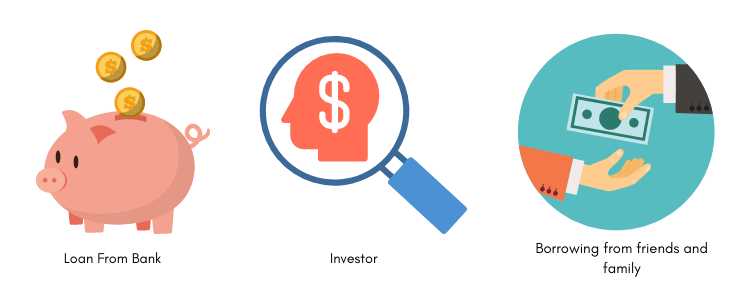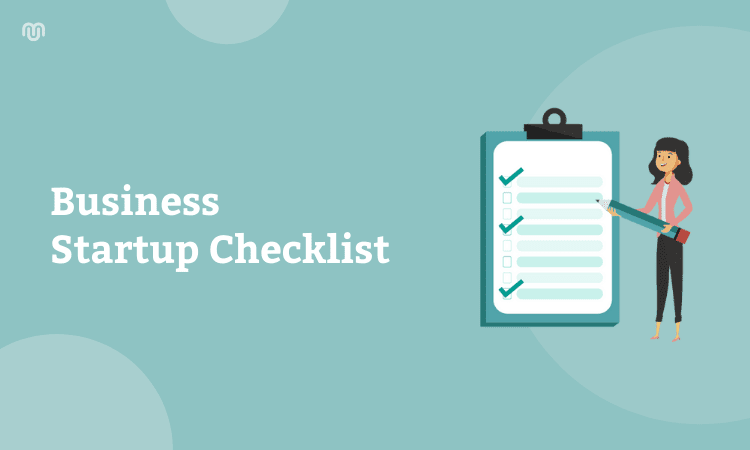Starting a business is never easy. There are all sorts of problems, challenges, and concerns to address. For many, taking that first step is the hardest part and is certainly deserving of praise.
Considering that this is your first business, it’s safe to assume that you have limited knowledge of what goes into building a company. This is why having a business startup checklist helps.
In this article, we will see why you need a business startup checklist, why you need it for a smooth start, and the ten things you must do before putting up the “Yes, we’re open!” sign.
Table of Contents
Why do You Need a Business Startup Checklist?
Getting your business up and running requires a great deal of hard work, discipline, and commitment. You might have to work overtime without an obvious source of revenue and it’s more than likely that your work-life balance will take a hit.
This is where a business startup checklist can help make the process easier, and faster, and give you a sense of clarity and direction. It can help you better navigate the initial stages of your startup to build a strong foundation for long-term success.
10 Things to Check off Your Business Startup Checklist
1. Envision a Business Idea

Whether it’s the next cloud kitchen, an AI-based gardening toolkit, something conventional, or something entirely different, your business idea will shape your startup.
A business idea is a brief of what you want to do to serve your target market and how you intend to do it. Most entrepreneurs usually have a business idea ready, but in case you don’t, you can develop a business idea by:
- Identifying the problems that exist and offering a solution to them.
- Offering better solutions than existing companies.
2. Conduct Research and Test Viability
Once you have a business idea, you should test whether it is realistic or not. Sometimes, even if your idea itself is good, there might be other factors at play that can prevent you from turning the idea into a profitable and sustainable venture.
Therefore, you need to predict the profitability, practicality, and scalability of your idea. To understand if your business idea can stand the test of time, conduct extensive research and analyze your:
- Target market size: How many people will buy your product or service?
- Target customers’ problems: What are the pain points?
- Target customers’ preferences: What are the preferred solutions for your target customers?
- Competitors in the industry: Are there any companies doing the same thing you want to do? What are your competitors doing? How are you different from them?
- Industry trends: Is your idea in alignment with the existing and upcoming trends?
3. Write a Business Plan

It is one of the important parts of a business startup checklist. A business plan serves many purposes, but when you are just getting started, your business plan helps:
- Get financial support: Typically, all startups require financial assistance. Any investor interested in your startup will want you to submit a business plan before deciding to invest in your business. It inspires trust and conveys your business’s viability.
- Act as a handbook: Writing a business plan involves intense research, analysis, and articulation of all the aspects of your business. It helps understand the various processes of your business, identify flaws, and rectify them.
4. Select your Brand Identifiers

Your company name should represent what you offer without being too vague or too up in the face. It should be unique and memorable. Before you decide on a name, it is good to check whether it is available or already taken.
Once you are done, get your company name registered along with the business structure, whether it is a sole proprietorship or LLC, a private enterprise, etc. Next, you need to decide how you want your customers to identify and remember you. This includes:
- Brand logo: A good logo is simple, and unique, and should represent what you stand for, not necessarily what you sell.
- Brand colors: Colors set the mood for your customers. Pick color palettes based on what you want your customers to feel when they think or see your brand.
- Brand message: This indicates the ideals, values, and ethics your company practices.
- Brand voice: It indicates how you communicate with your customers.
5. Get Legal Documentation

To sell your offerings to your target customers, you need relevant permits and licenses. Applying for these permits and doing all the paperwork can feel tedious, but these are critical to avoid legal complications further down the line.
Along with registering your company’s name, you should also get the following permits:
- Trademark for your business name: Getting your company name trademarked is not the same as getting your company name registered. A trademark protects your company name and helps restrict others from using it.
- Industry-specific license: It authorizes you to sell your services or products without any legal issues. For instance, if you own a food and beverages company, you need necessary safety certifications from FDA and the government to sell your products.
- Natural resource license and permits: You will need permits from the government if you use any natural resources or cause pollution or require a disposal solution.
- Signage permits: Many governments have restrictions on the size and location of signage. Look into the laws and get the relevant permissions that you need for your business.
6. Acquire Financial Support

Now that you have a business plan and all legal permits, you can start looking for investors. As we know that finance is a crucial part of every business startup checklist. But before you do that, estimate how much you will need to get your business started. These expenses include:
- Research costs
- Technology costs
- Product development costs
- Marketing costs
- Payroll
- Other miscellaneous costs
Once you are sure how much funding you will need, you think about how to get funds. There are multiple ways you can fund your business. Some of them are:
- Bank loans: You can apply for a bank loan. You might want to browse and pick from different banks depending on your preferred interest rate. You can also opt for an SBA loan if you fit the eligibility criteria. SBA works with lenders to make loans feasible for you and less risky for the lenders.
- Investors: Another way is to look for angel investors; these are private investors who fund businesses at early stages in exchange for a share in the company.
- Borrowing from friends and family: If you have someone in your family or friend circle willing to help you finance your business, you can make use of this opportunity. This can be a bit tricky to manage if you don’t have all the paperwork set in place to avoid misunderstandings.
7. Set up Your Office

Next, select a location to set up your store or office. While picking a location for your business, it is necessary to keep the following in mind:
- Pick locations that reduce your costs, like rents or construction costs.
- Consider how the locality will affect your business. For instance, opening a fancy sushi place near a university campus might not be as profitable as an affordable pizzeria.
- Consider the laws of the local and state governments.
After picking a location, get all the necessary equipment and infrastructure for your office or store.
8. Hire a Team

Most startups don’t instantly hire a team, but if you have too much on your plate and want some breathing room, hiring a small team of employees can be a good idea. Understandably so, it’s best, for now, to hire freshers and interns instead of highly experienced and expensive professionals to save costs.
9. Launch your Business
Select an appropriate date for your launch and get the word around. As you have no customer base or reputation, getting people to enter your store will need a little more than just putting up signage, flyers, and brochures.
You need to promote your launch and offerings through the press and social media. Getting influencers to endorse your brand can help you get the attention you need for a grand launch.
10. Set Achievable Goals

Once you’ve launched your business, you need to keep pushing yourself by setting SMART goals. It is vital to set achievable yet challenging goals to scale your business.
As you achieve goals, keep updating your business plan to align with your current status. This will help you find inconsistencies in your business activities and help refine them as necessary.
Ensure a Smooth Start with a Business Startup Checklist
Building a business from scratch is taxing, but it is a commendable achievement nonetheless. A business startup checklist is a powerful tool to help you avoid missing key marks and also saves time. Follow the above list to build your business from the ground up.







